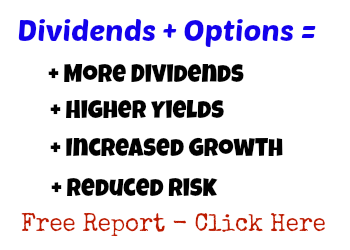Dividend Payout Ratio
The dividend payout ratio is calculated by dividing a company's dividend by its net income. The resulting number tells you what percentage of a company's net income is required to service or cover the dividend.
The long term dividend investor should pay close attention to both the payout ratio as well at the dividend growth rate, when evaluating a potential investment.
The Ideal Dividend Payout Ratio
Unfortunately, there really is no ideal payout ratio. It varies both by industry as well as individual company.
When evaluating a payout ratio, it's good idea to compare the current ratio to the company's historical ratio as well as ratios of other companies in the same or similar industries.
Sometimes, as part of its dividend policy, a company will also share the approximate payout ratio it targets.
A large and stable business that doesn't need to reinvest large amounts of its earnings back into the business in order to grow, can typically afford to maintain a much higher dividend payout ratio than a smaller, faster growing business that fuels its growth by plowing most of the profits back into the business.
Dividend Warning Signs
Paying attention to the payout ratio may provide useful insights into a company's future dividend policy and the dividend safety of your investment.
If, for instance, you see that a company's payout ratio steadily increases every year, that's a good indication that earnings are not keeping pace with the dividend growth rate.
And if the payout ratio exceeds 100%, the dividend is simply not sustainable. Of course, a one-time hit to net income could be the culprit, so use common sense. But, over time, a robust dividend growth rate must be matched by an overall stable payout ratio.
Finally, you should be aware that certain dividend paying companies are structured for tax purposes in certain ways that result in unusually high payout ratios. REITs, Master Limited Partnerships, and Energy Trusts, for example pay no corporate taxes as long as they distribute the bulk of their earnings (up to 90%) back to share and unit holders in the form of dividends.
Related Articles and Resources:
Create Your Own Dividend Reinvestment Program
Dividend Reinvestment Plans: A Leveraged Investing Alternative
High Dividend Stocks and Option Trading
Dividend Growth Investing: Why It's Superior To Growth Investing
Tweet
Follow @LeveragedInvest

>> The Complete Guide to Selling Puts (Best Put Selling Resource on the Web)
>> Constructing Multiple Lines of Defense Into Your Put Selling Trades (How to Safely Sell Options for High Yield Income in Any Market Environment)
Option Trading and Duration Series
Part 1 >> Best Durations When Buying or Selling Options (Updated Article)
Part 2 >> The Sweet Spot Expiration Date When Selling Options
Part 3 >> Pros and Cons of Selling Weekly Options
>> Comprehensive Guide to Selling Puts on Margin
Selling Puts and Earnings Series
>> Why Bear Markets Don't Matter When You Own a Great Business (Updated Article)
Part 1 >> Selling Puts Into Earnings
Part 2 >> How to Use Earnings to Manage and Repair a Short Put Trade
Part 3 >> Selling Puts and the Earnings Calendar (Weird but Important Tip)
Mastering the Psychology of the Stock Market Series
Part 1 >> Myth of Efficient Market Hypothesis
Part 2 >> Myth of Smart Money
Part 3 >> Psychology of Secular Bull and Bear Markets
Part 4 >> How to Know When a Stock Bubble is About to Pop



